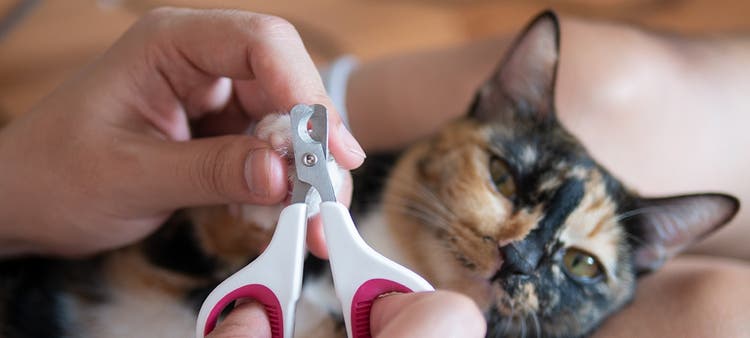How to protect your cat — and yourself — from Bartonella.
One minute you’re cuddling with your cat, and the next, they’ve decided to take a swipe at your arm or a nibble from your fingers. Sound familiar?
You’re probably used to getting the occasional cut or scratch from playing with your cat, but most pet owners don’t know that their feline friend could be carrying Bartonella, also known as cat scratch disease or cat scratch fever.
What Is Bartonella, and How Common Is It?
Bartonella henselae is a bacterium commonly found in cats’ red blood cells. It’s estimated that 30-40% of domestic and shelter cats carry B. henselae.1
Many cats carry B. henselae in their system without ever experiencing related health issues. To be safe, cat owners should make sure nicks or bites from their cats don’t become infected.
How Do Cats Become Infected with Bartonella?
Cats can get infected with B. henselae through contact with fleas, most commonly through direct skin contact with infected flea feces. Here’s what happens: Fleas defecate the bacteria onto your cat’s skin as they bite and feed. The B. henselae bacteria enters the cat’s system through small cuts or breaks in their skin, but also settles under or around a cat’s nails after they scratch at itchy flea bites.
How Do I Know If My Cat Is Infected with Bartonella?
The short answer? You may never know. Most cats don’t show any clinical signs of Bartonella.
In rare cases a cat with a serious infection may have a fever, seem more lethargic, have a reduced appetite, experience vomiting or have red eyes and swollen lymph nodes.1 Testing for the presence of B. henselae bacteria is only recommended for cats that show clinical signs.1
Can I Vaccinate My Cat Against Bartonella?
Currently, no vaccinations exist for Bartonella infections in cats.1
How Is Bartonella Passed on to Humans?
When a cat playfully (or not so playfully) scratches a human, the B. henselae bacteria residing on or around their nails is deposited in the fresh wound. (This is where the terms “cat scratch disease” and “cat scratch fever” come from.) You can also contract Bartonella if an infected cat licks an open wound.2
What Are Some Common Bartonella Symptoms in Humans?
Cat scratch disease symptoms often start in the area where the scratch occurred (typically the hands or arms). You might notice swelling, redness and pain, or a small blister or raised pimple at the site.2
Other symptoms of cat scratch disease may include:2,3
- Enlarged lymph nodes
- Fever, sometimes severe
- Nausea
- Neurological problems
While more common in elderly or immunocompromised individuals, everyone is susceptible to Bartonella infection and should seek medical care if they experience these symptoms.
Can I Be Tested for Bartonella?
According to the Centers for Disease Control and Prevention (CDC), there are currently no FDA-approved over-the-counter lab tests available for detecting Bartonella in humans.4 People are rarely tested for cat scratch disease unless their symptoms are severe.
How Can I Help Prevent or Reduce the Chance of Contracting Bartonella?
Fleas are a major carrier of Bartonella. Flea-control products, which are found most commonly in the form of monthly spot-ons or longer-lasting collars, kill fleas on your cat that can carry Bartonella and can help prevent future infestations. Remember that even indoor-only cats should receive a flea preventive!
Additionally, you can avoid a Bartonella infection by playing gently with your cat (to reduce the chance of getting bitten or scratched) and promptly washing cat scratches or bites with soap and water.1
References
- Centers for Disease Control and Prevention. For Veterinarians. Accessed July 27, 2023. https://www.cdc.gov/bartonella/veterinarians/index.html.
- Centers for Disease Control and Prevention. Bartonella henselae infection or cat scratch disease (CSD). Accessed July 27, 2023. https://www.cdc.gov/bartonella/bartonella-henselae/index.html.
- BMJ Best Practice. Bartonella infection. Accessed July 27, 2023. https://bestpractice.bmj.com/topics/en-us/1152.
- Centers for Disease Control and Prevention. Myths and Facts about Bartonella. https://www.cdc.gov/bartonella/faq.html.





